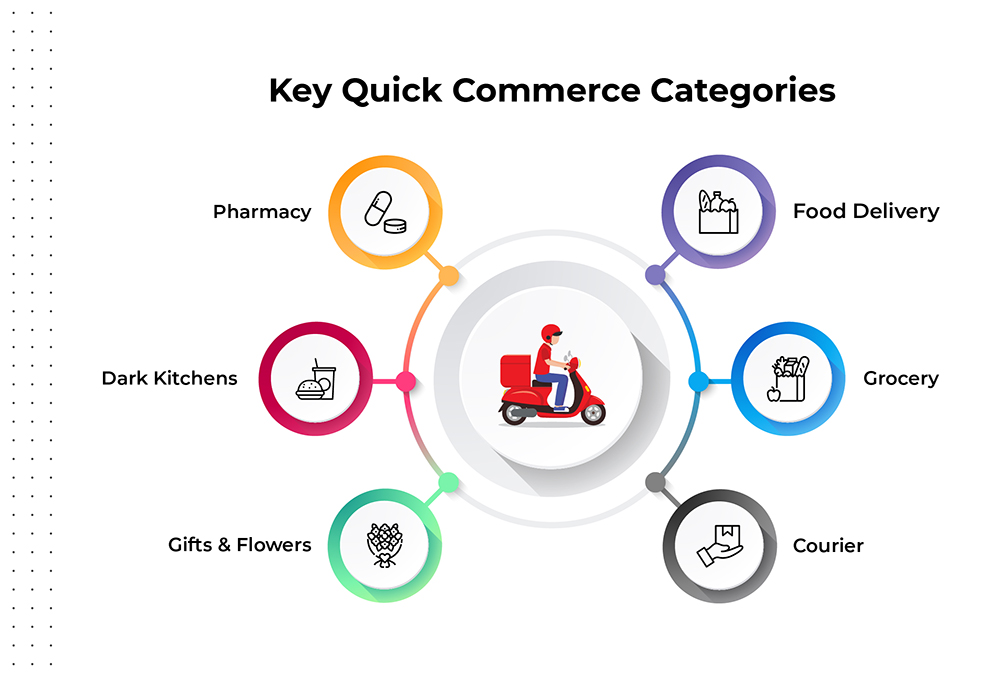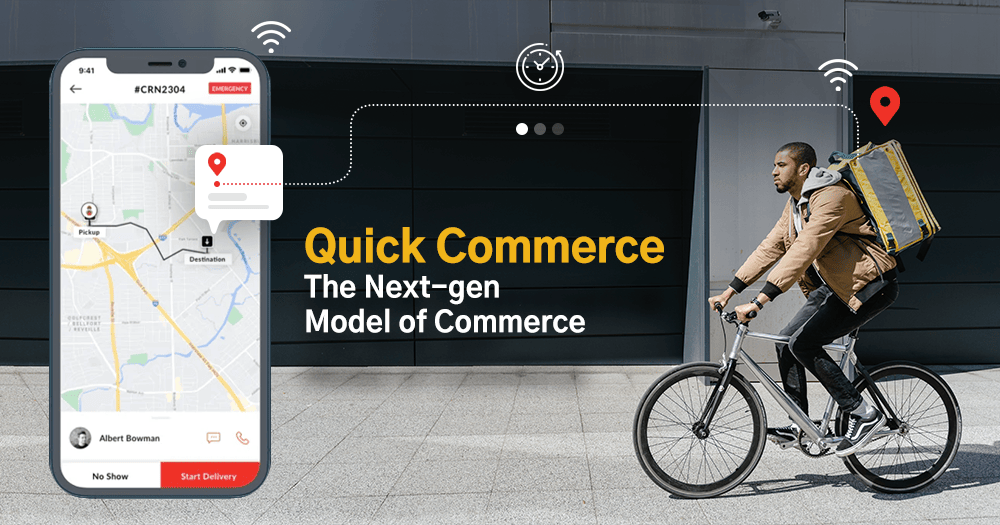
Quick Commerce refers to a hyper-fast delivery service that promises to deliver goods to customers within an hour of placing an order. The concept is based on the idea that consumers are increasingly time-poor and want immediate gratification when it comes to their shopping needs. By offering ultra-fast delivery times, Quick Commerce companies hope to differentiate themselves from traditional e-commerce retailers and capture a larger share of the market.
The Quick Commerce model relies on a few key factors to make this possible. First, it requires an extensive network of local warehouses and distribution centers to ensure that products can be delivered quickly and efficiently. Second, it depends on the use of advanced technology, such as automated warehouses and delivery robots, to speed up the process and reduce the need for human intervention. Finally, it relies on a fleet of dedicated delivery drivers who can quickly transport products to customers’ doors.
The rise of Quick Commerce has been driven by a number of factors. One is the growth of on-demand services in other sectors, such as ride-sharing and food delivery, which have set a new standard for fast and convenient delivery. Another factor is the increasing importance of last-mile delivery, which is the final stage of the delivery process from the warehouse to the customer’s doorstep. Last-mile delivery can be a bottleneck in the delivery process, as it can be challenging to ensure that products are delivered quickly and efficiently.
Quick Commerce has significant potential benefits for both consumers and retailers. For consumers, it offers the convenience of fast, on-demand delivery, without the need to leave their homes. For retailers, it can increase sales and customer loyalty by offering a differentiated and competitive service.
However, there are also potential challenges and risks associated with Quick Commerce. One is the high cost of building and maintaining a network of local warehouses and distribution centers. Another is the need to ensure that products are delivered safely and securely, particularly for high-value items. Additionally, there is the risk of increased competition and market saturation, as more companies enter the Quick Commerce space.
In conclusion, Quick Commerce is a rapidly growing trend that has the potential to revolutionize the e-commerce industry. It offers consumers fast and convenient delivery, while providing retailers with a competitive advantage in a crowded marketplace. While there are challenges and risks associated with Quick Commerce, the trend is likely to continue to grow as consumer demand for fast and convenient delivery continues to rise.


I was pretty pleased to discover this web site. I want to to thank you for your time for this fantastic read!! I definitely really liked every bit of it and I have you book marked to see new things on your web site.